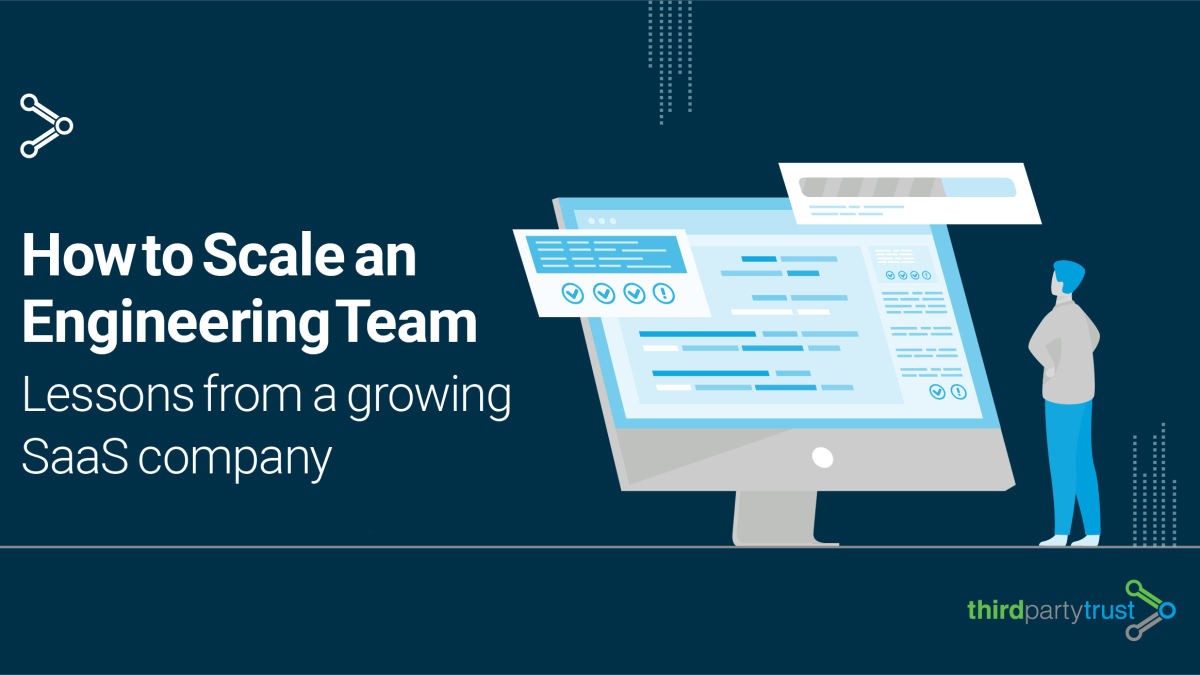Most SaaS companies grow out of good ideas nurtured by a collaborative culture and an evolving set of processes that are learned, refined, and remade. It can be a fun, exciting time of growth and possibility.
However, with successful growth comes the need to scale and (re)structure ways of doing, best practices, and entire teams. While this is true of nearly every growth-stage SaaS organization, the challenges are unique for engineers, who rely on quick collaboration and iteration to grow. In early stages, they need to build from the ground up to make the Founder’s vision come true.
Each SaaS company is unique, but the challenges and lessons learned from scaling can be fairly universal. This is the story of how I, as the VP of Engineering at ThirdPartyTrust (a third party risk management or TPRM company), quadrupled my team while trying to retain our core strengths (and my personal sanity.)
The challenges of growing an engineering team
When I joined ThirdPartyTrust, you could count the entire Engineering team on one hand. We started as a team of five, with one or two people for each bare bones specialty: front end, back end, and QA. There was no hyper-specialization or unneeded overlap, just a group of busy people focusing on what needed to be done.
This made it easy for everyone to know what was going on, and we could help each other out anytime. The number of moving parts was small enough that you could track everything in your head. It was a very dynamic, collegial approach.
However, it didn’t come without limitations. We quickly realized these included:
- Lack of formal processes – no set way of doing things because we were more concerned about getting it done than getting it done exactly right
- Different priorities – no clear hierarchy of needs or deadlines driving our workflow
- Desynchronization – everyone working on their own project(s) without pooling resources
- Constant distractions (i.e. fires to put out) – no clear guidelines on when to prioritize certain “emergencies” over others
- Severe multitasking – no clear boundaries on what our singular focus should be at any given point
Perhaps the biggest challenge was making sure we were growing in the right direction. When rushed by deadlines, feature requests and hot fixes, it’s easy to perpetuate some old habits. These few people were so used to doing their thing in their own way that we had to be very careful not to grow as separate islands.
Spoiler alert: We successfully scaled the Engineering team from 5 to 20 people and counting, in a way that set the example for the rest of the organization.
Here are 3 lessons learned from our experience that will hopefully help other growing SaaS or tech startups.
#1 Multitasking does not allow you to do more
When everyone was doing everything, there was a constant back and forth with the same projects that made it difficult to focus on new ones. It was closer to an orchestra where every single instrument was playing their own tune.
With that came the challenge of stopping the severe multitasking and putting all the necessary resources to a common goal. There will always be a fair amount of multitasking in a growth-stage company, but we managed to minimize it.
We assembled a multidisciplinary team, removing the noise and distractions so we could work with a common goal. Which brings us to the next topic: adding bodies to the process.
#2 Recruiting and nurturing the right people is often underrated
The specialty team structure proved to be successful, so we kept it and added one more area of expertise: DevOps. Every new bottleneck meant readjusting processes and, more importantly, identifying gaps in the team structure.




